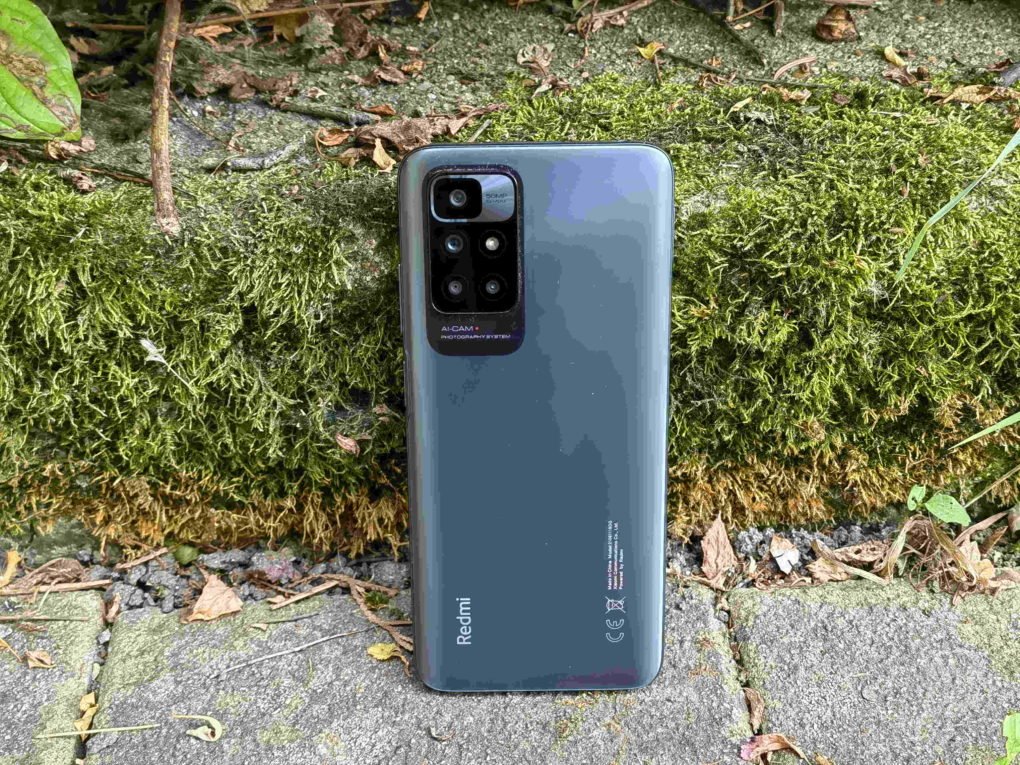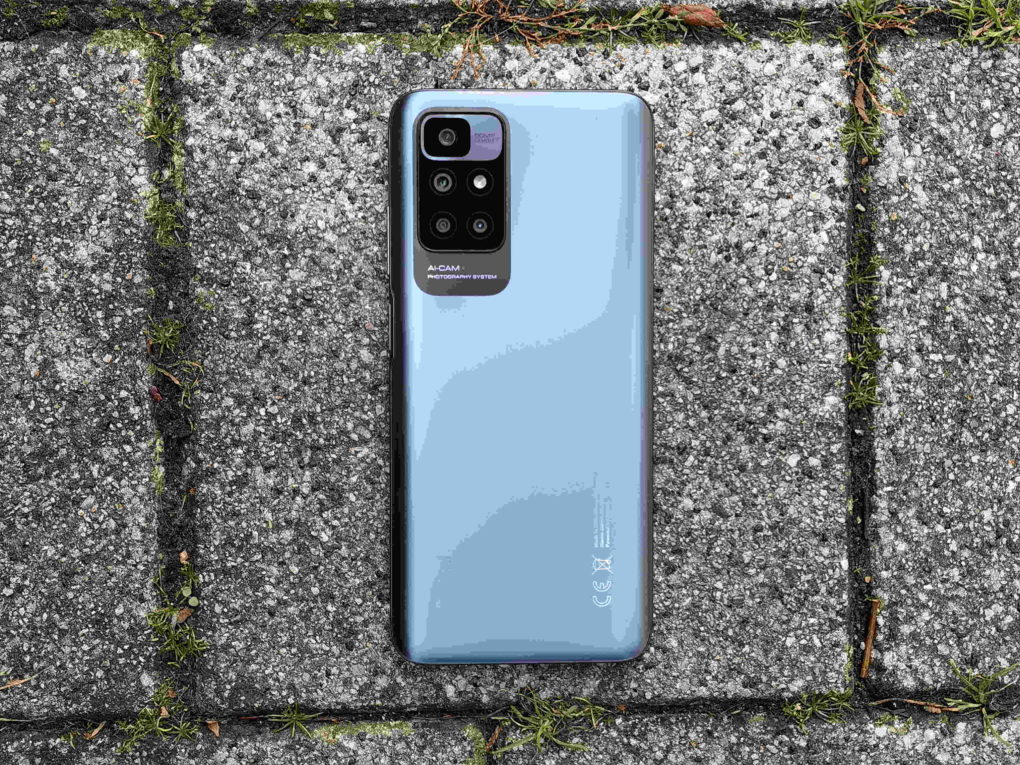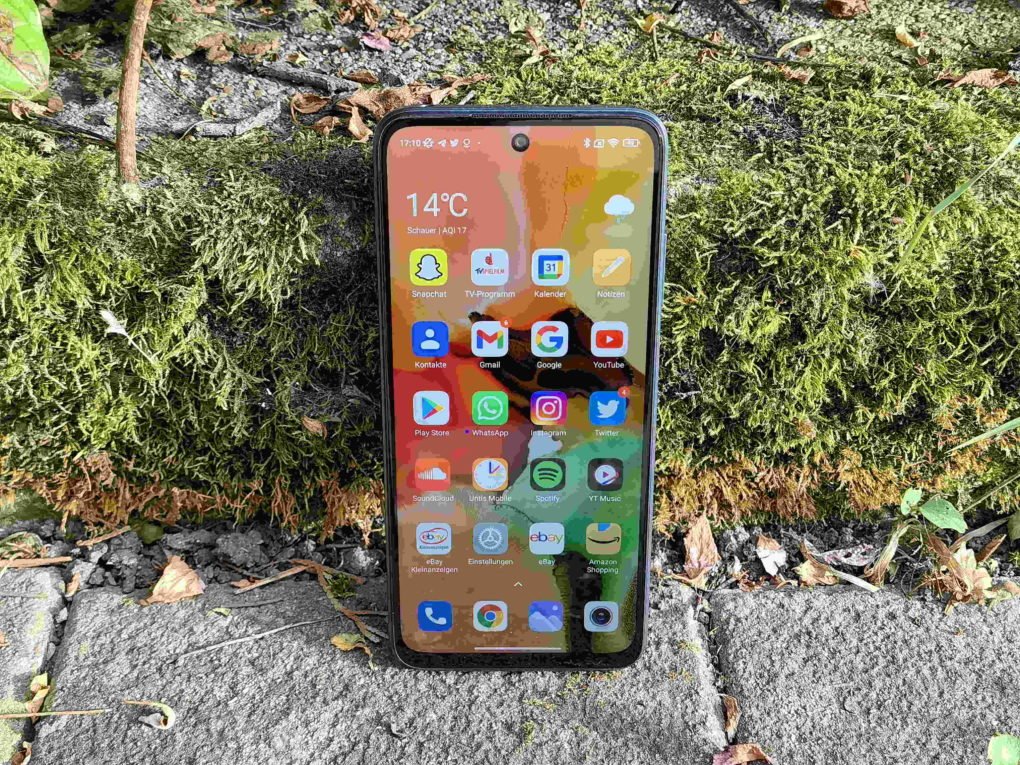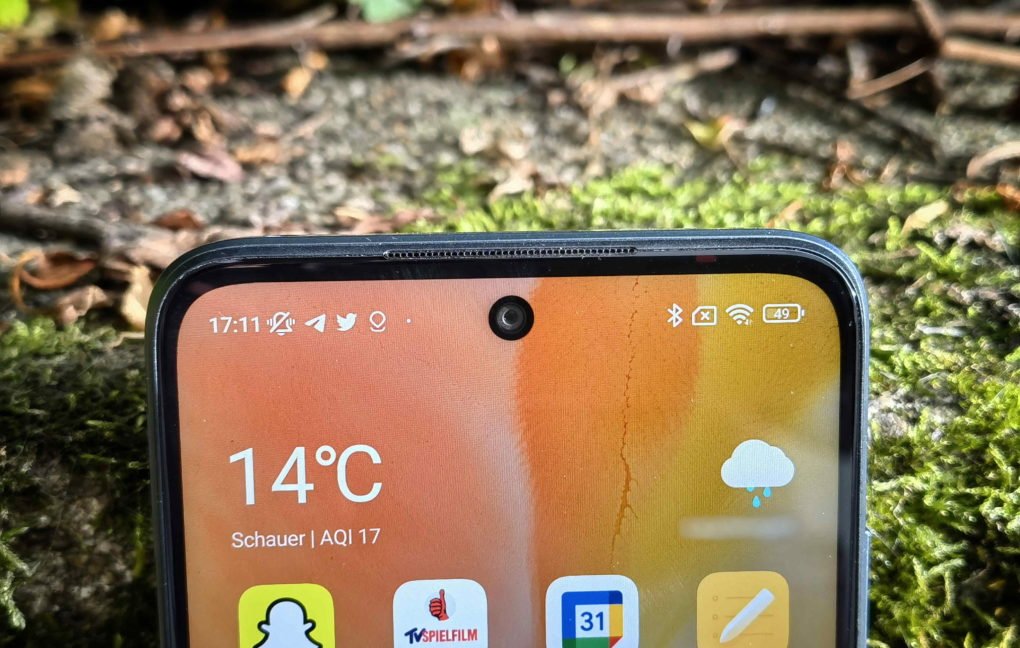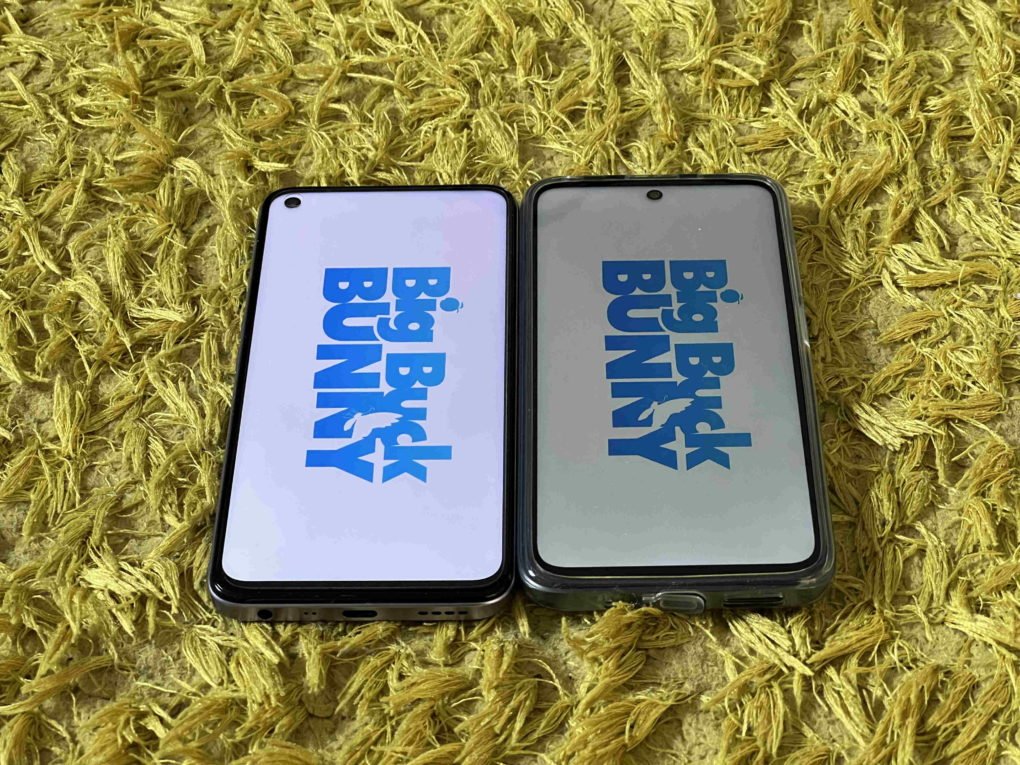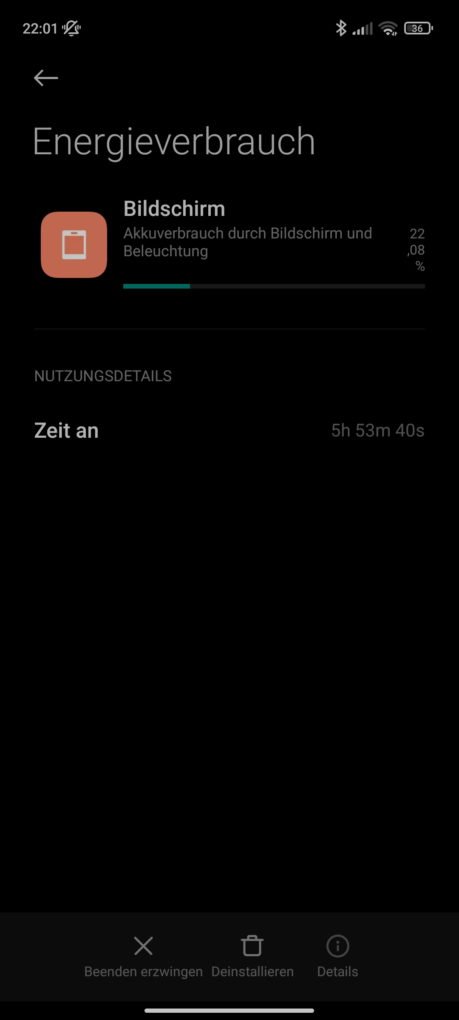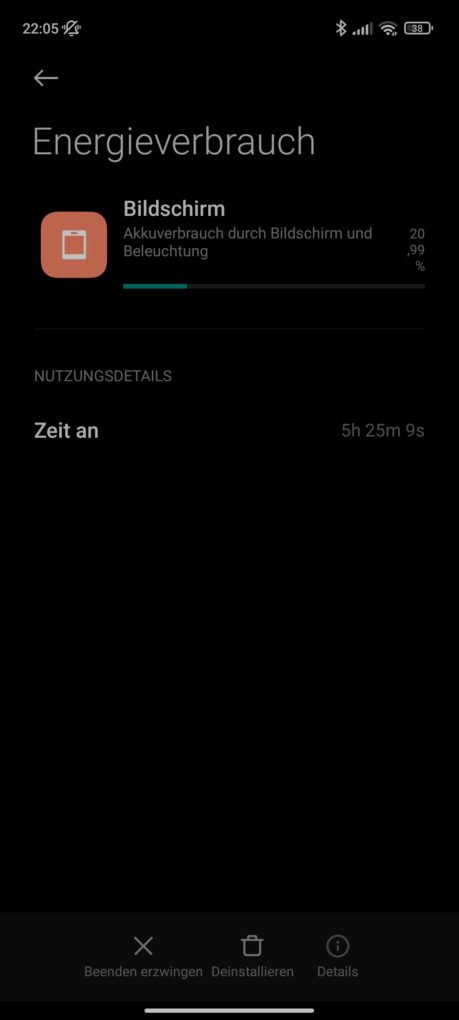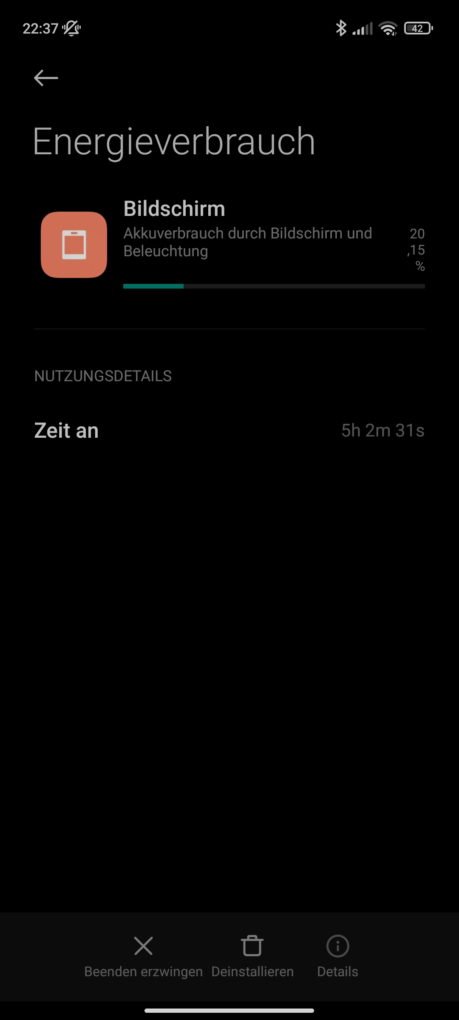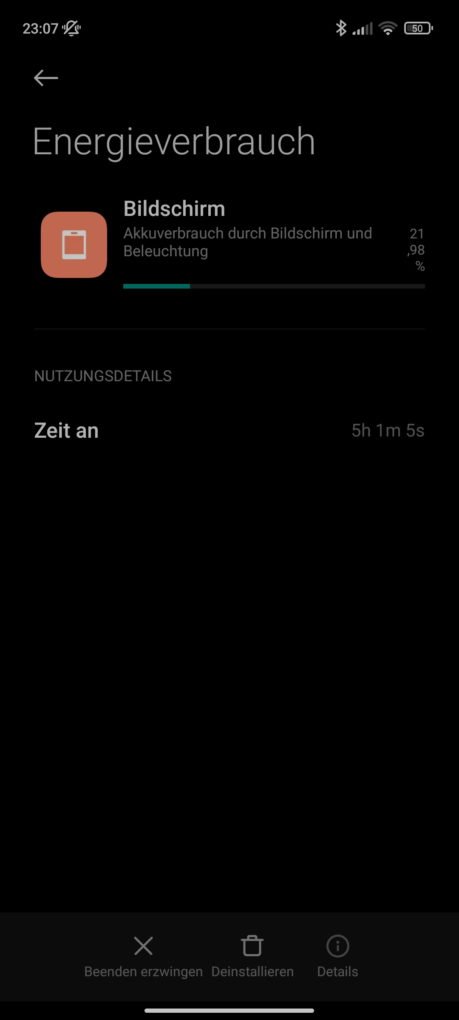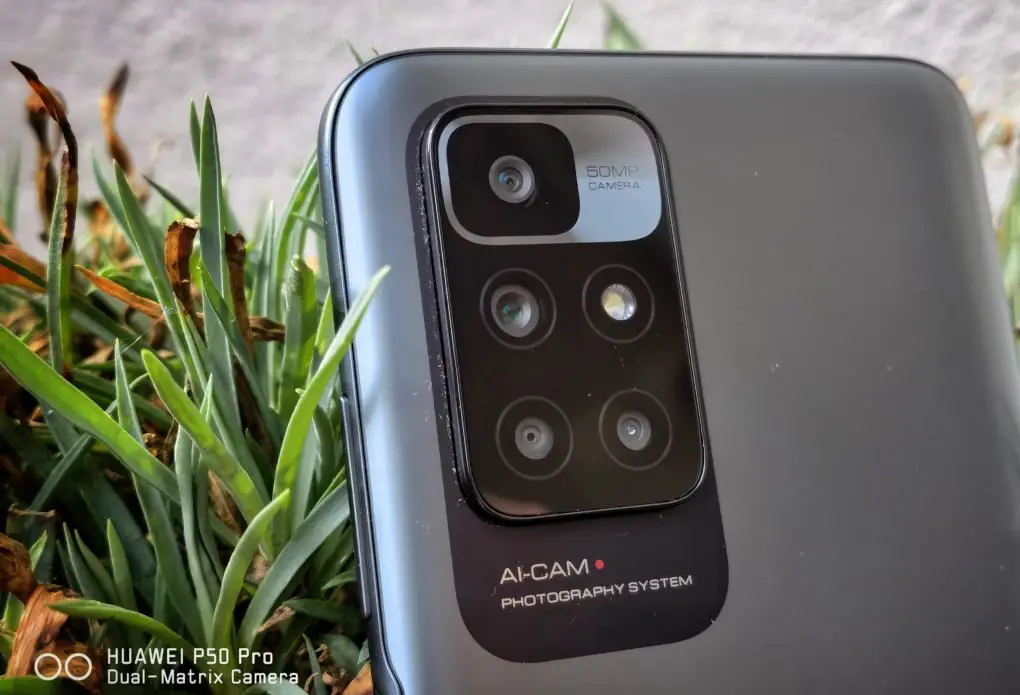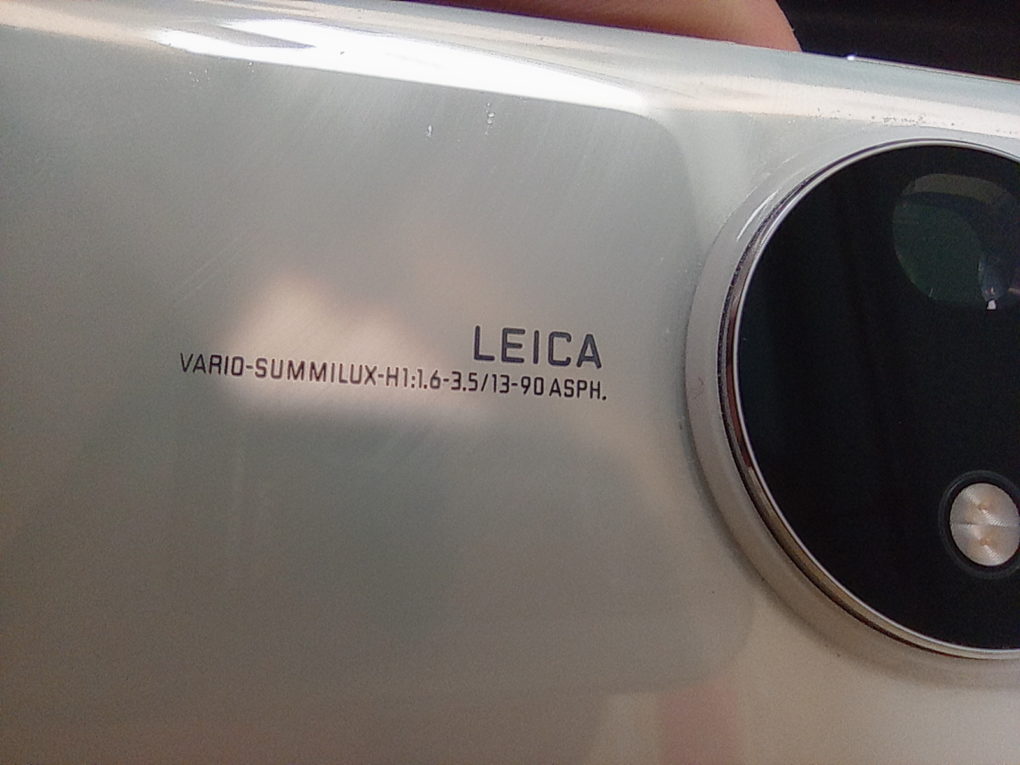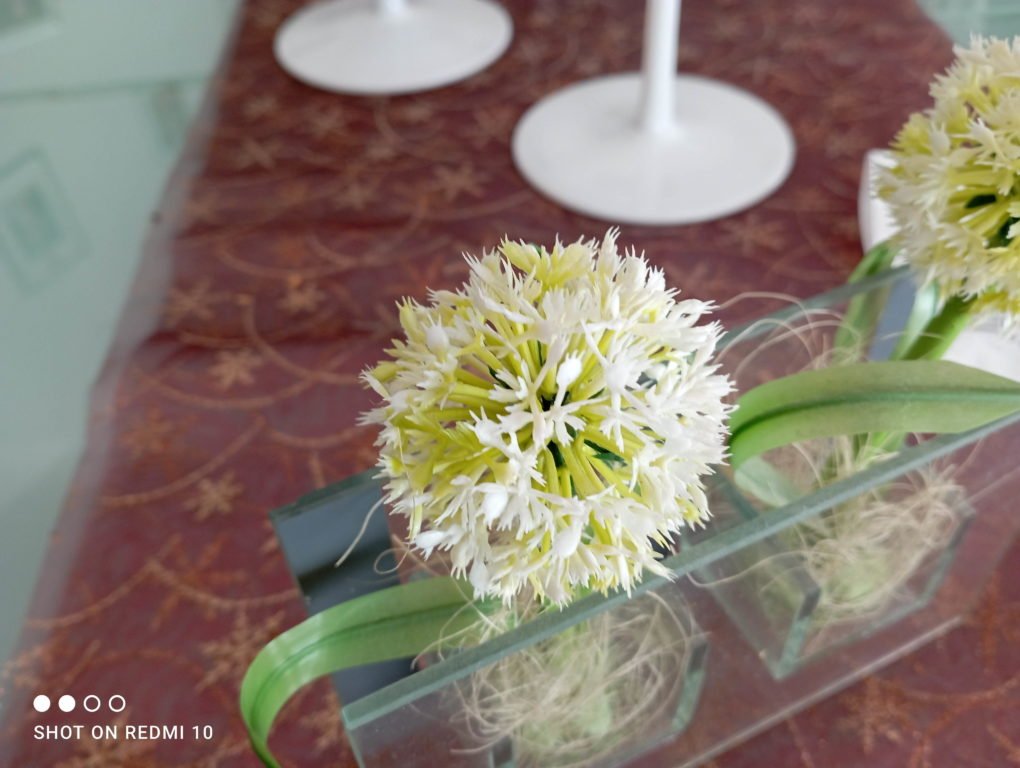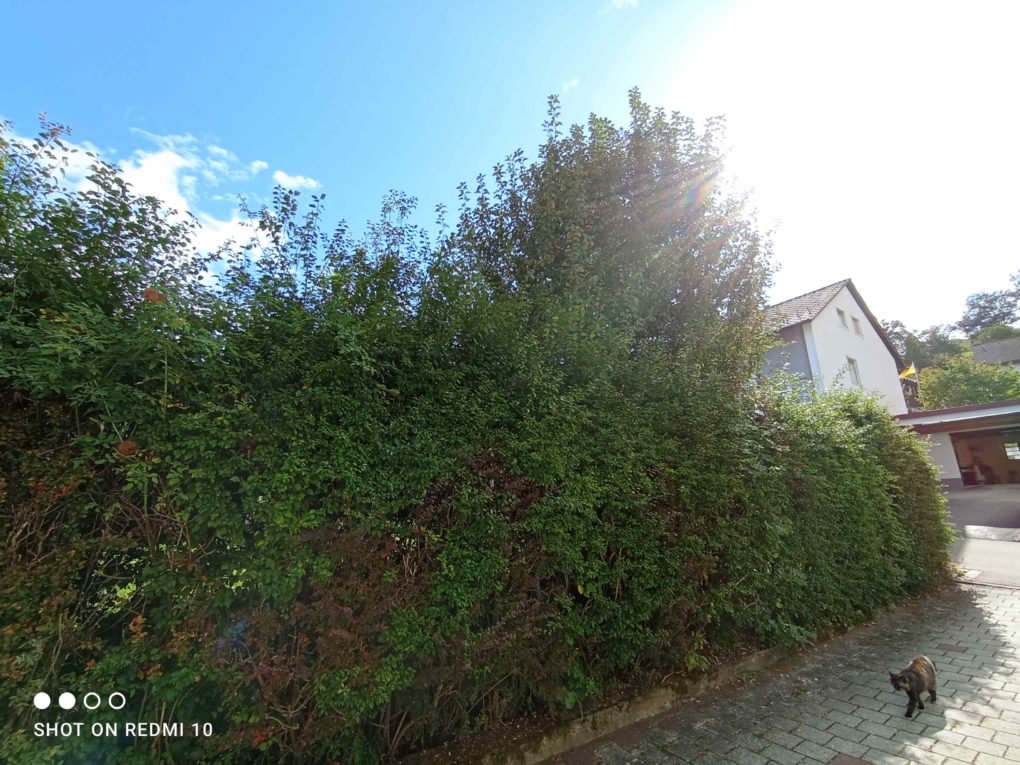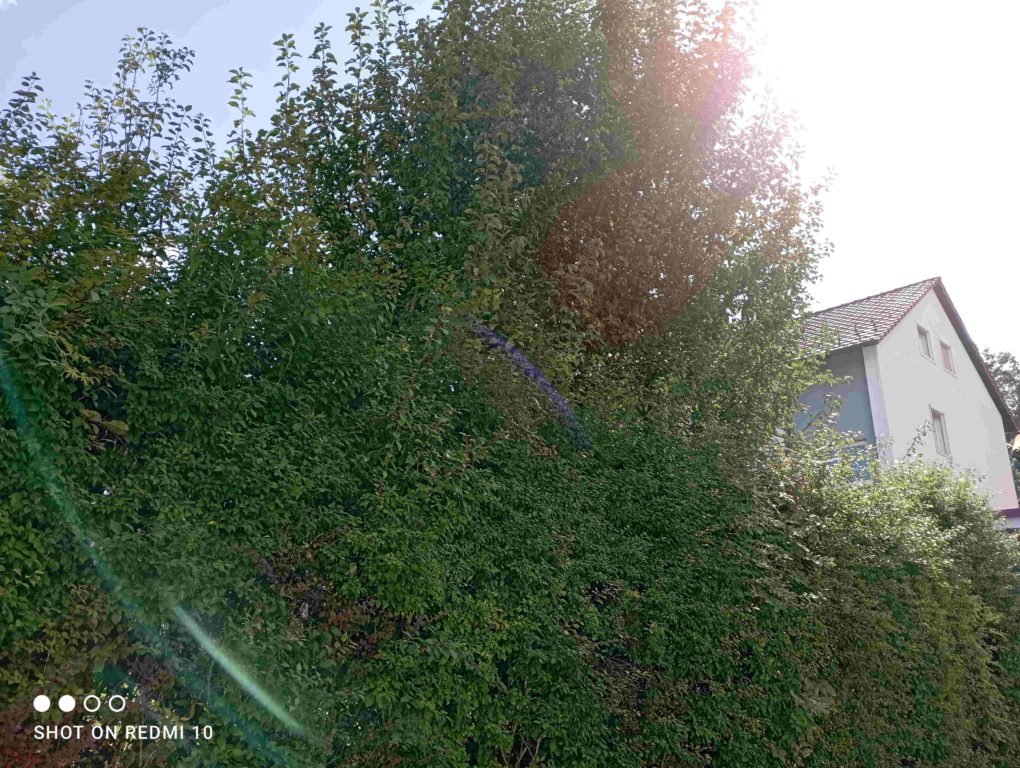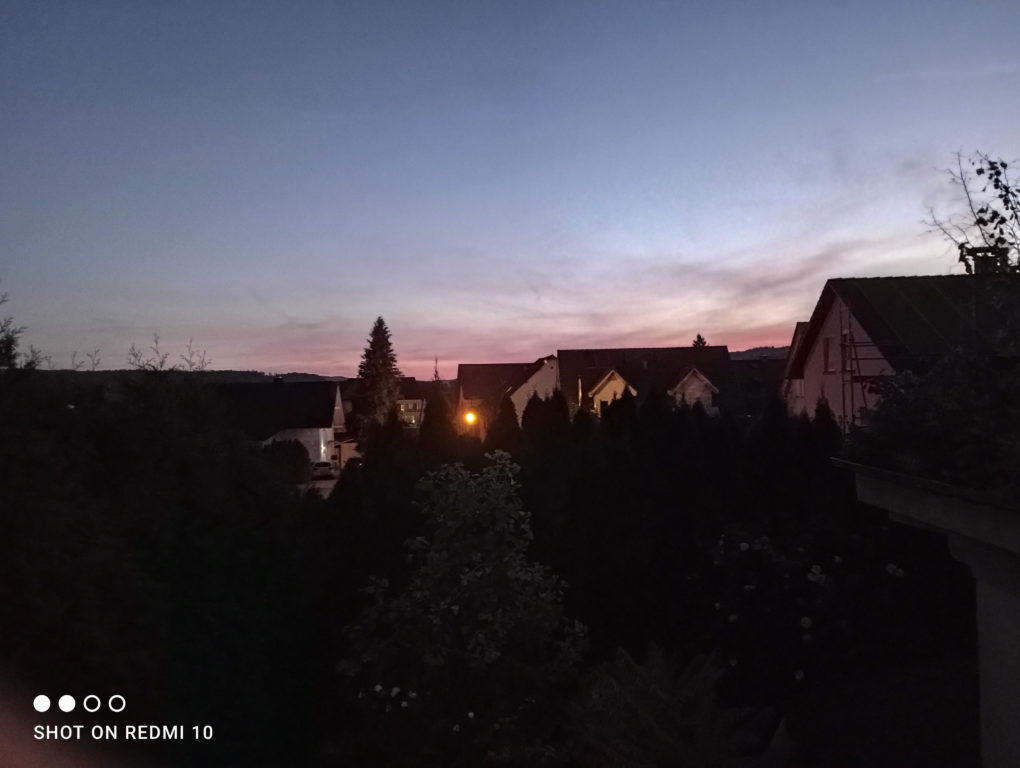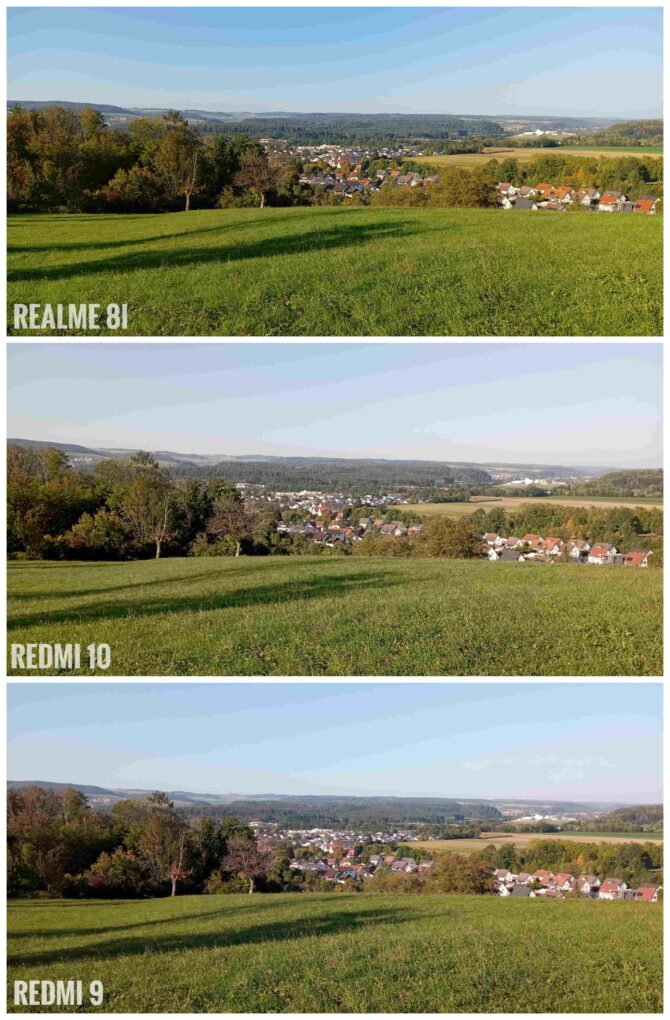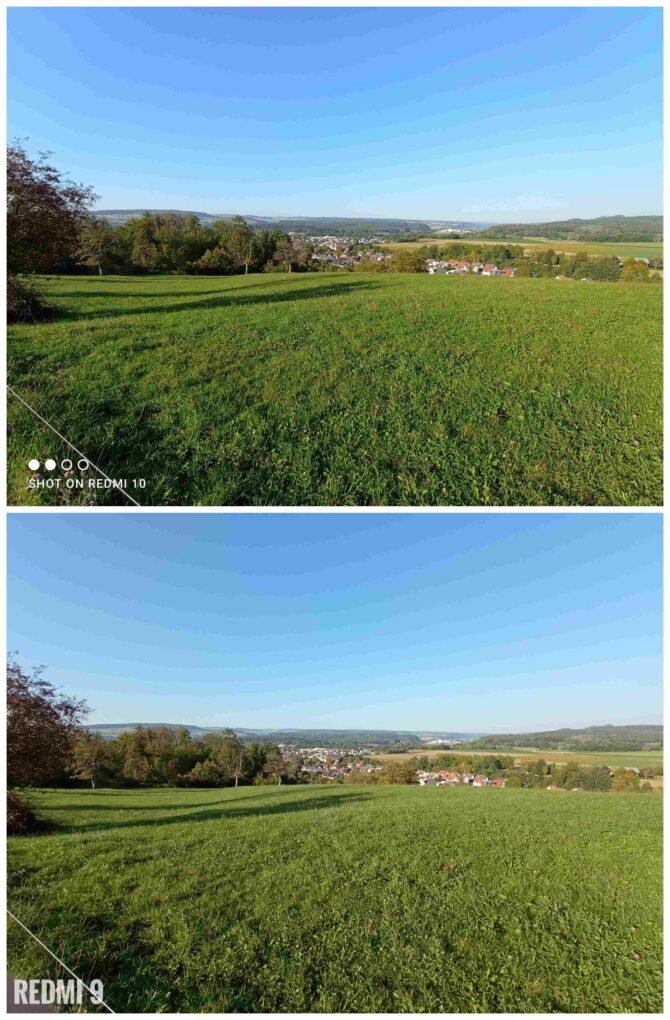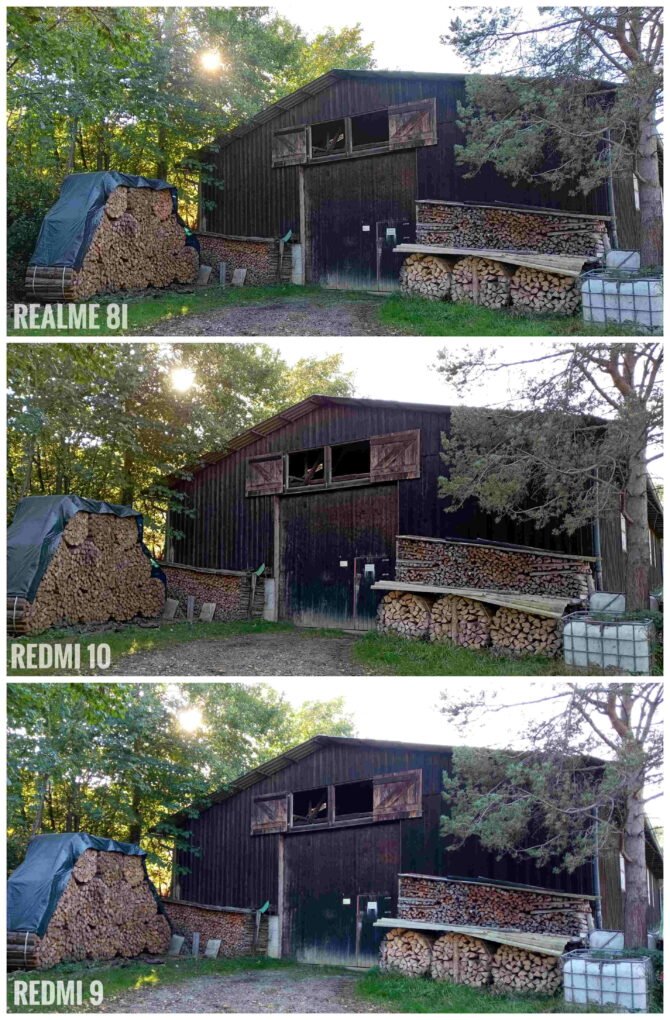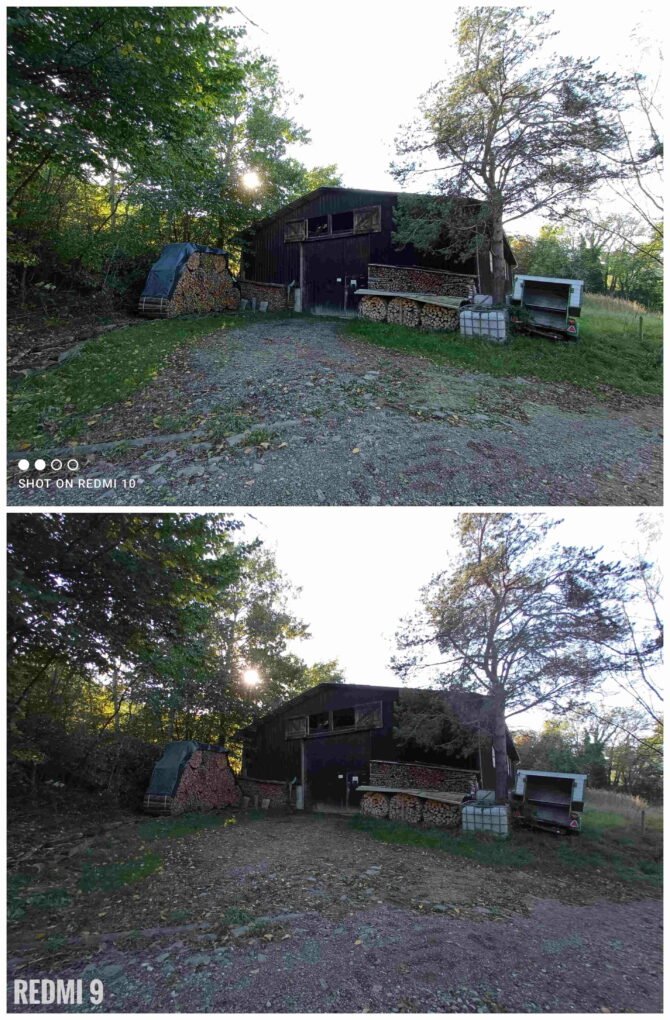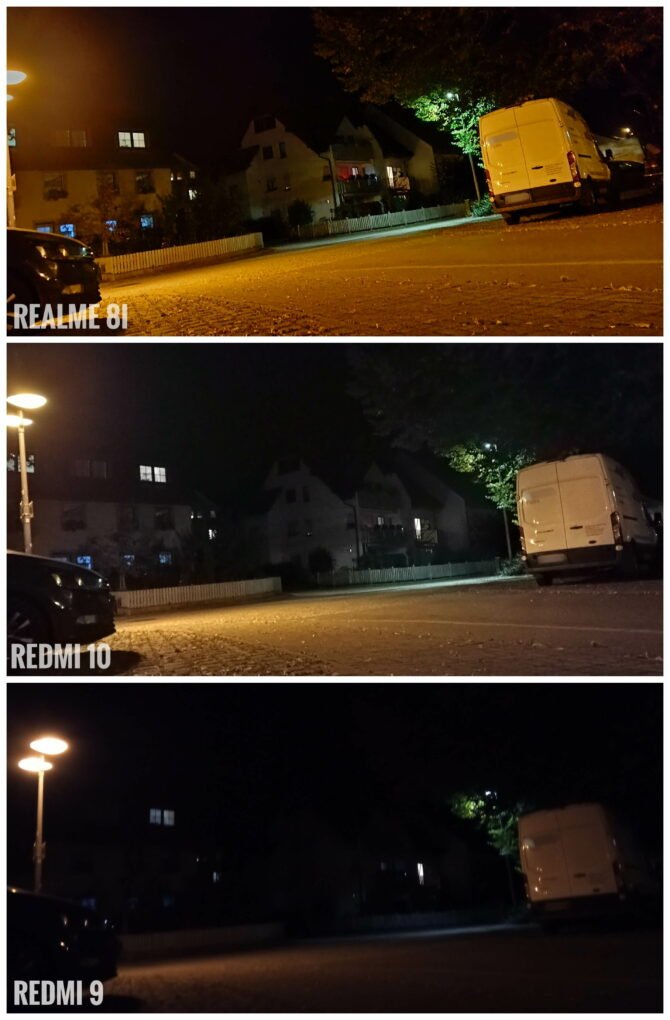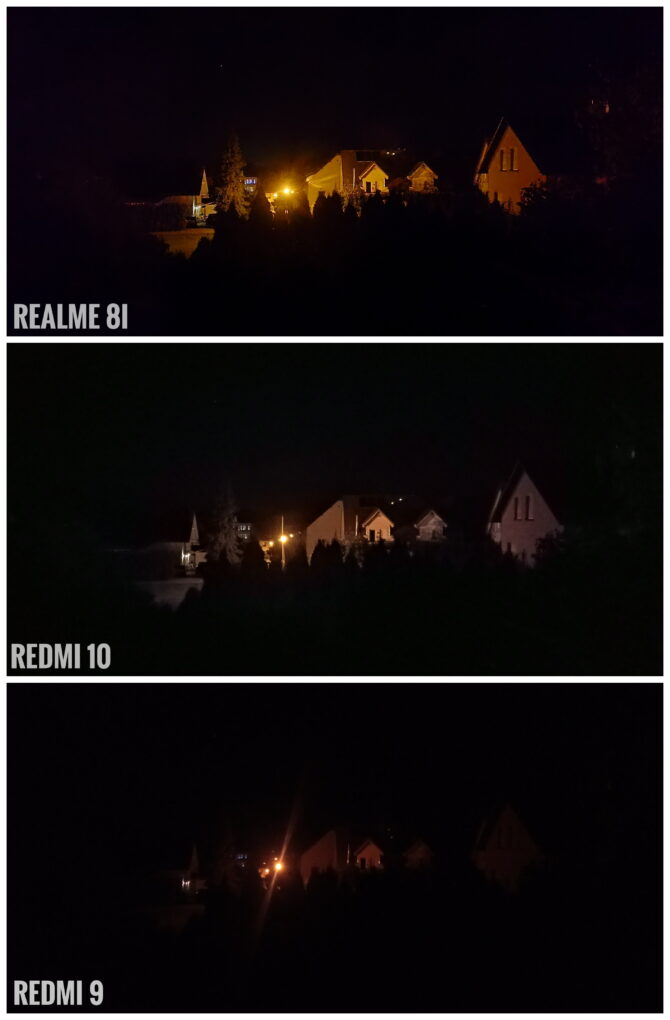Redmi 10 review: light and shadow
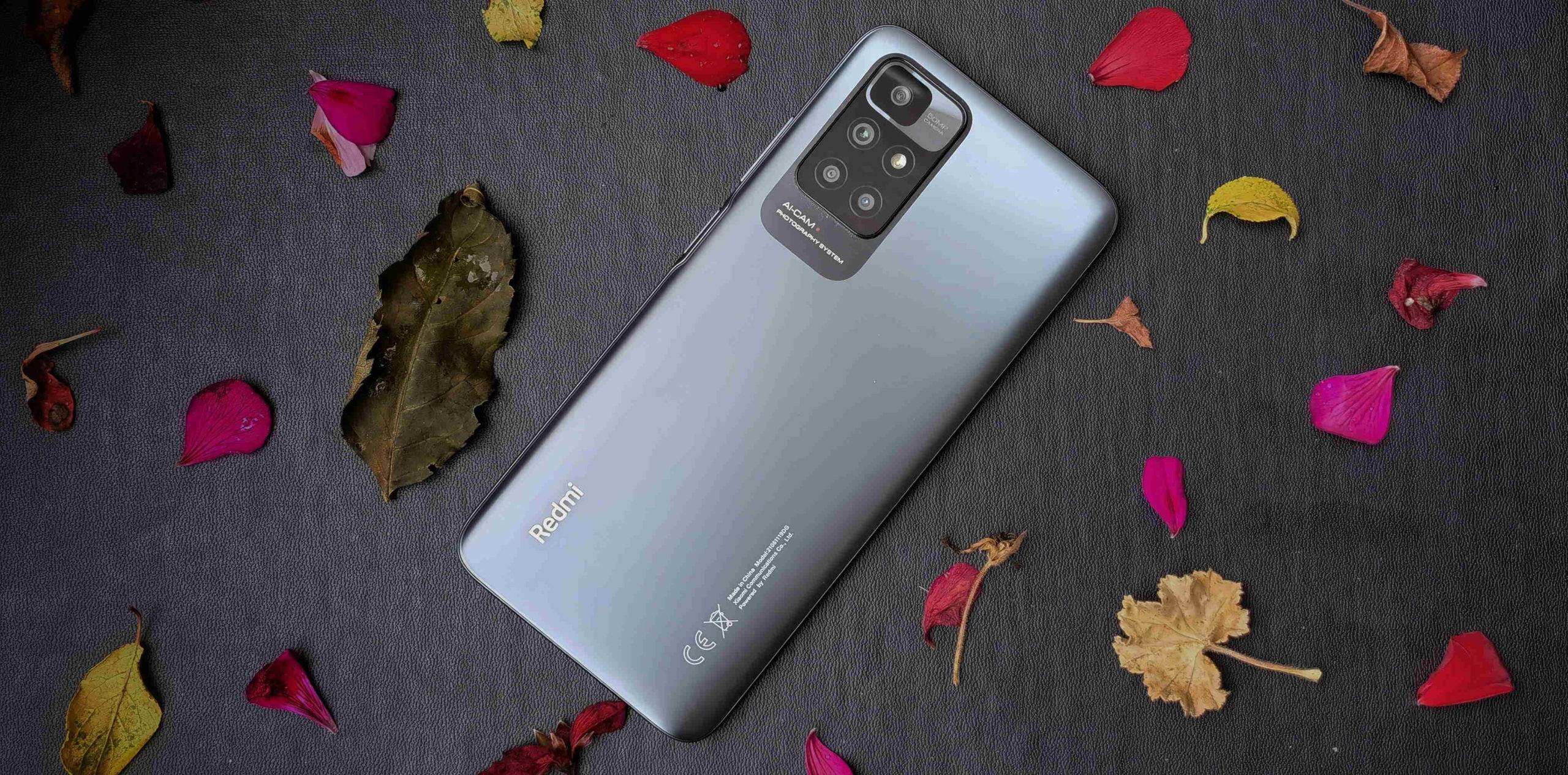
A few weeks ago, Xiaomi introduced the Redmi 10, an affordable entry-level smartphone that has a lot to offer on paper for a recommended retail price of 179,90 euros.
Among other things, you get a 50 megapixel quad camera, a large display with a smooth 90 Hertz refresh rate, a huge 5.000 mAh battery and much more. We have tested the Redmi 10 extensively in the last few weeks and you can find out in this review whether it can convince not only on paper but also in everyday life for 180 euros.
Jump to section
Haptics, design and processing
With dimensions of 162 mm in height and 75,3 mm in width, the Redmi 10 is one of the larger smartphones that no longer procan be easily operated with one hand. In addition, there is the thickness of almost 9 mm, which also makes it difficult to use it with one hand. However, the weight of 194 grams is perfectly fine. For such a cheap smartphone, the Redmi 10 is surprisingly good and has a good grip, even if it looks a bit sharp-edged due to the not perfectly rounded edges, but that is completely normal in this price range and not a big deal.
Matt plastic is used on the back, which is much easier to care for and less prone to fingerprints than plastic with a high-gloss finish. It also feels noticeably higher quality. Paired with the likewise matte plastic frame, the Redmi 10 feels noticeably higher quality than the Poco X3 NFC, Realm 8 and Realme 8i at. With Sea blue, Pebble white and Carbon Gray customers have three beautiful colors to choose from, all of which are matte. I tested the gray version, which always looks a little different depending on the incidence of light. Every now and then the back looks a bit bluish and sometimes it even shimmers silver, which looks really good in my opinion. In addition to the color, the camera module in the left corner immediately catches the eye, which is larger than average for an entry-level smartphone. There is space here for a total of four sensors, which protrude visibly from the housing, which is why the smartphone wobbles slightly when being operated on the table. If we turn the smartphone around, a huge display appears, which is only interrupted by a small, centrally located punch hole. The bezels around the screen are reasonable for the price.
Last but not least, we dedicate ourselves to processing. The case makes a stable, well-made impression and, unlike some of the other competitors, the back can hardly be dented. In addition, the keys have a decent pressure point, sit sufficiently firmly in the case, but could be positioned a little further down so that they can be better reached with one hand.
- The Redmi 10 in the color "Carbon Gray". (Image: TechnikNews)
- Depending on the incidence of light, the color always looks a little different. (Image: TechnikNews)
- The bezels around the screen are completely appropriate for the price of 180 euros. (Image: TechnikNews)
Display - 90Hz, but otherwise too little
The display is an IPS panel, which measures 6,5 inches and has a pleasantly sharp resolution of 2.400 x 1.080 pixels. So no individual pixels can be seen in everyday life. In addition, the screen supports a fluid refresh rate of 90 Hertz, which makes all animations and scrolling visibly more fluid than with just 60 Hertz. At this point I would like to praise Xiaomi, because such a high refresh rate is rather rare in this price range.
- The recess does not interfere with everyday use at any time. (Image: TechnikNews)
- The viewing angle stability of the Redmi 10 (right) can be improved a lot. The Realme 8i (left) performs visibly better here. (Image: TechnikNews)
Unfortunately, the display is calibrated a bit too warm for my taste, which is why the white value is enormously distorted and the viewing angle stability can be greatly improved. Colors visibly discolor even at the slightest tilt. The Realme 8 and 8i are visibly better in these points in particular. The maximum brightness is just enough to be able to read the display reasonably well in bright surroundings, unless the sun shines directly on the panel, because then it can Proproblems with readability. At least the screen is well lit, which is often the case with LC displays Prorepresents problems.
Software - MIUI
The in-house user interface MIUI, based on Android 11, is used as software. At the time of the test report, the security patch was updated to August.
MIUI is a heavily customized user interface that has relatively little in common with stock Android. It is quite colorful and in some places much too confusing in my opinion. There are a number of additional functions, such as "Floating windows": When notifications arrive, they can be pulled down and the app then opens in a small window. You can move this window and make it smaller. There is also an always-on display and a one-hand mode, which is definitely an advantage with such large displays. What I don't like that much, however, is the night mode, which is mainly used on Snapchat and TwitterProfilm pictures some Protrouble makes.
Unfortunately, some bloatware was initially pre-installed with Netflix, TikTok, eBay, Amazon, Facebook, LinkedIn, Booking.com and a number of games. Fortunately, all apps prouninstall without problems.
Performance - that can be done better
Inside is the Helio G88 from MediaTek, which is supported by 4 GB of RAM. Depending on the version, there is also 64 or 128 GB of internal memory procan easily be expanded via a microSD card. In addition, the smartphone can be used in dual SIM mode, and it is important to mention that two SIM cards can still be inserted when expanding the memory via a microSD card. So you don't have to choose between dual SIM and memory expansion. Kudos to Xiaomi.
I was a little disappointed with the day-to-day performance, even for the price. Don't get me wrong, the smartphone is definitely usable and apps like WhatsApp, YouTube or Twitter run without major problems Proproblems, but despite the high refresh rate, there are always larger stutters and delays that occur almost everywhere in the system. You need a bit of patience, especially when taking photos, and as soon as the Redmi 10 is used more intensively or the app is changed, the stuttering increases. I would have expected a little more here. A Realme 8 performs noticeably better despite the lower refresh rate and even the in-house one Redmi Notes 10S has more to offer.
Battery - very good runtimes
Xiaomi installs a 5.000 mAh battery that can be charged with up to 18 watts. With the included power supply unit, it takes a good two hours until the battery is fully charged again, which is okay for the recommended retail price. A Realme 8, for example, offers a little more with up to 30 watts and currently costs about the same.
- Screenshot: TechnikNews
- Screenshot: TechnikNews
- Screenshot: TechnikNews
- Screenshot: TechnikNews
With the 90 Hertz refresh rate activated, I always got through a day easily and even 1,5 to 2 days were usually not Proproblem At the end of the day, with a screen-on time of 5-6 hours, I still had about 35-50 left Procent battery left, which are really strong values. Even heavy users shouldn't use the Redmi 10 Prohave trouble getting through a day without a charge.
Camera - neat
It will be very exciting with the cameras, because Xiaomi wants to impress across the board on this point. They install four sensors on the back, which can be found in the top left. The main camera is a new 50 megapixel Samsung sensor with a size of 1 / 2.6 inches, which, according to Xiaomi, should deliver excellent results for less than 200 euros. There is also an ultra-wide-angle camera that has a resolution of 8 megapixels. This setup is supplemented by two additional sensors, each with 2 megapixels, which are responsible for macro shots and depth effects. An 8 megapixel camera is installed for selfies.
The main camera has not only received a major upgrade on paper compared to its predecessor, but also in terms of the ultimate quality of the recordings. In good lighting conditions, the differences are still limited, although you can see a little more details on the Redmi 10 on closer inspection and the dynamic range has also become slightly better. In this point, however, the Realme 8i is clearly ahead, also in terms of color reproduction, because colors are reproduced a bit too pale on the Redmi 10 for my taste. As soon as the lighting conditions get worse, you should definitely use the night mode, which exposes the images for a few seconds in order to be able to deliver better results. For 180 euros I find the lowlight performance completely solid, even if I see the Realme 8i just mentioned slightly in front.
The biggest advantage of the Redmi 10 compared to the Realme 8i is the built-in ultra-wide-angle camera, which the Realme unfortunately lacks. For less than 200 euros, it takes surprisingly solid pictures that are actually useful in (very) good lighting conditions. Here, too, I see visible improvements compared to the Redmi 9.
Unfortunately, the macro camera is just as unusable as with other comparable smartphones. The pictures mainly lack sharpness and realistic colors. For macro photos you should rather use the main camera.
Test photos
Let's take a look at a few test photos. As always, the following images are absolutely unprocessed, but compressed without loss in order to keep loading times and memory consumption of the website low.
- Picture: TechnikNews
- Picture: TechnikNews
- Picture: TechnikNews
- Picture: TechnikNews
- Picture: TechnikNews
- Picture: TechnikNews
- Picture: TechnikNews
- Picture: TechnikNews
Comparison with the Redmi 9 and Realme 8i
Last but not least, we want to compare the cameras in different situations with the predecessor and the similarly expensive Realme 8i.
- The sharpness of the Redmi 10 is on a good level in this price range, only the colors are reproduced a little too pale here. (Image: TechnikNews)
- The ultra-wide-angle camera of the Redmi 10 makes visibly sharper images, especially at the edge areas. (Image: TechnikNews)
- The Realme 8i reproduces colors a little more naturally and exposes the sky slightly better, whereas the Redmi 10 has advantages in terms of sharpness. (Image: TechnikNews)
- The ultra-wide-angle camera has visible improvements compared to its predecessor. (Image: TechnikNews)
- The Redmi 10 is visibly better than its predecessor, but it can't quite keep up with the Realme 8i. (Image: TechnikNews)
- The Realme 8i delivers the best result. (Image: TechnikNews)
The cameras of the Redmi 10 have been visibly improved compared to last year's predecessor. Both the image sharpness and the dynamic range are now on a decent level, with Realme still having the edge in terms of color reproduction. The Redmi reproduces colors a little too pale for my taste. The ultra-wide-angle camera has also received a successful upgrade. It makes sharper images, which is particularly noticeable at the edge areas. As soon as the lighting conditions get darker, all three smartphones tend to be unusable, although the Realme 8i does quite well for an inexpensive entry-level smartphone. The Redmi 10 is slightly worse, but I am quite satisfied here for 180 euros. For this price you can't ask for more.
Others - decent speakers, solid fingerprint sensor, and more
Xiaomi has given the Redmi 10 stereo speakers, which is anything but natural for less than 200 euros. They also sound relatively good up to a certain volume. Overall, I was very satisfied here.
The smartphone can be unlocked, among other things, by a fingerprint sensor in the power button, which always works reliably and sufficiently quickly.
The built-in vibration motor is completely appropriate for the price. Although it does not convey a particularly high-quality feeling in the hand, other manufacturers sometimes use noticeably worse vibration motors for this price.
Conclusion
The Redmi 10 is a solid entry-level smartphone for currently 180 euros, from which I would have expected a little more. I like the battery life, the vibration motor, the haptics, the stereo speakers and the cameras pretty much, but on the other hand there is the performance, which I already consider to be marginal and there is also a lot of room for the display even in this price range above. Then there is the strong competition from Realme. Both that Realm 8 as well as most 8i score with a noticeably better performance and better displays. In addition, there is even faster Fast-Charge on the Realme 8 and a slightly better main camera on the 8i. Therefore, I would currently rather recommend one of these two smartphones, unless you do not attach too much importance to the display quality and performance and absolutely need an ultra-wide-angle camera and stereo speakers, because then you can definitely consider the Redmi 10 draw.
We would like to thank Xiaomi Germany for providing the Redmi 10!

